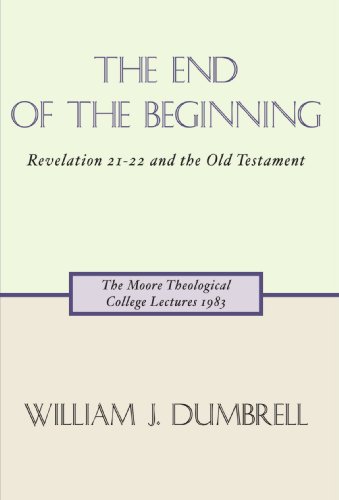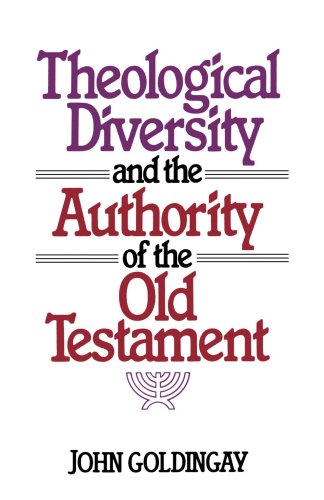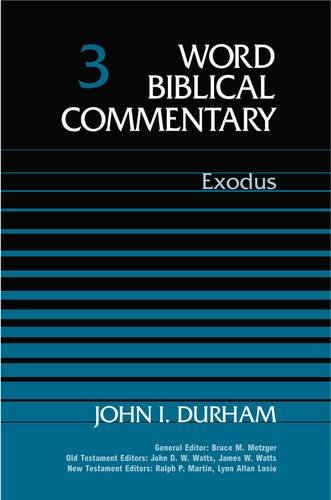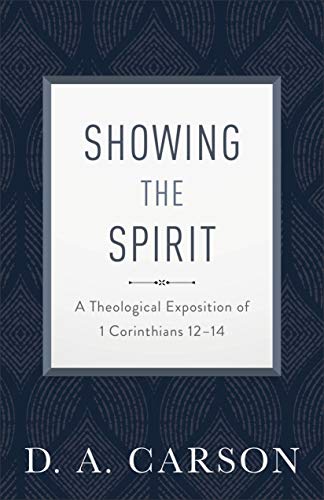The End of the Beginning. Revelation 21–22 and the Old Testament
Written by William J. Dumbrell Reviewed By G. K. BealeThis book represents the Moore Theological College Lectures of 1983 given by Dumbrell. The reader should not be misled by the title of the book since it is not primarily a study of Revelation 21–22 nor of the use of the OT in the concluding chapters of Revelation. Indeed, only about twenty pages of the entire 204 are dedicated to direct discussion of Revelation 21–22. Rather this work is a biblical theology of the OT and NT organized around the five themes of the new Jerusalem, new temple, new covenant, new Israel and new creation. There are five chapters in the work in which Dumbrell discusses each respective theme by surveying its development in the OT, gospels, epistles and Revelation. Surprisingly, only about one page at the end of each section is given over to discussion of the respective theme in Revelation 21–22, betraying the author’s broader aim throughout the book. The formal reason for tracing these themes throughout Scripture is that they form the core of the conclusion of biblical history in the perspective of John’s Apocalypse. Therefore, Dumbrell believes that such a broad study will shed light on the biblical background upon which John drew to compose his final panoramic vision and how he utilized these antecedent biblical ideas. In short, the prior development of these biblical themes becomes a commentary on their use in Revelation 21–22.
Dumbrell gives no adequate rationale as to why he views the above-mentioned five topics as the ‘centers’ of his biblical theology, except for their formal presence in Revelation 21–22. But it is apparent that he has chosen these as the most overarching ideas of the canon as a result of his overall study of the Bible. For him each theme serves as a window, an entire perspective on the whole structure of the Bible. Each theme is not to be viewed as of equal importance nor is each independent of the others. And although Dumbrell admits that these are not the only possible themes for consideration in this kind of work, it is clear that he thinks that together they are the most important.
The author admits that the order in which the themes are discussed is subjective even though he makes a plausible attempt to give a logical explanation for this: each is an aspect of ‘the Bible’s wider concept of government, the Kingdom of God … the New Jerusalem is the symbol of government and those governed; the New Temple is the seat of government; the New Covenant is the instrument of government; the New Israel reveals those governed and their role; and the New Creation is a final comprehensive presentation of both the governed and the Governor’ (Introduction).
Although Dumbrell has organized his biblical theology around these five themes, he finally opts for the new creation as the most comprehensive idea and the summary of the other four. The entire scheme of the Bible is structured around the movement ‘from creation to new creation by means of divine redemptive interventions’, climaxing in Christ’s death, resurrection and second coming which conclude all things (e.g. pp. 166, 196). In this regard, redemption is always subordinate to creation in that it is the means of reintroducing the conditions of the new creation (e.g. pp. 184–185, 191, 194). All events since the fall are to be seen as a process leading to the reintroduction of the original creation. In order to evaluate Dumbrell’s proposed ‘center’ of biblical theology and to become exposed to other proposed ‘centers’ the student will be helped by consulting G. Hasel’s two works on the subject. The works of Warren A. Gage (The Gospel of Genesis [Winona Lake: Eisenbrauns, 1984]) and Meredith Kline (Images of the Spirit [Grand Rapids: Baker, 1980]; Kingdom Prologue,Vol. I-III [S. Hamilton, MA: Gordon-Conwell Theological Seminary Press, 1986]) would be excellent supplements to Dumbrell’s book since their focus also is upon a tracing of creation themes throughout Scripture.
I believe Dumbrell’s proposal is very close to the mark. He demonstrates well how the OT develops this overriding concern of creation. However, not only is his discussion of Revelation too brief (in view of the book’s title) but so also is the analysis of NT material (especially Pauline literature) in general. This is a major limitation since according to Dumbrell’s own view the death and resurrection of Christ are the climactic expressions of the OT doctrine of redemption woven throughout all of the covenants (p. 166). Nowhere is there a precise explanation of how Christ’s death and resurrection relate to or inaugurate the new creation. Indeed, much could be said about this relationship. For example, at the least, Dumbrell should have attempted serious discussion of 2 Cor. 5:14–17; Gal. 6:14–16; Eph. 1:20–23 and 2:13–15; Col. 1:15–18 and Rev. 1:5 and 3:14. In each of these texts Christ’s death and resurrection is formally related to the beginning of the new creation. But how? Dumbrell’s thesis demands that this question be answered more thoroughly and clearly. I think the basic answer in these texts is that Christ himself became the beginning of the new creation through his resurrection (cf. 2 Cor. 5:15–17; Col. 1:18; Rev. 1:5 and 3:14) and his death was the inaugurated destruction of the old creation (Gal. 6:14–15; 1 Jn. 2:2, 12–17). Of course, this explanation needs trenchant development. Dumbrell himself does formally analyse Col. 1:15–20 in an illuminating manner but he still does not answer the above question.
Dumbrell makes his most helpful and creative contributions in the area of covenant theology. Especially in this respect the author’s present work is a further development of his earlier Covenant and Creation(Lancer/Paternoster, 1984), where he argues that the diverse expressions of covenant(s) throughout the Bible are but aspects of ‘only one biblical covenant, that made implicitly by the fact of creation itself and reestablished in the details of Gen. 6:18 and 9:7–13’ (cf. End of the Beginning, p. 103). Dumbrell makes a good case that all the covenants and promises after the Abrahamic are primarily intended as positive developments of that covenant (e.g. pp. 49–52, 97–99, 129, 134, 149, 195). Likewise, the Abrahamic covenant is placed after the preceding chapters of Genesis as a keynote explaining how the problems introduced by the fall will be resolved (cf. p. 132). Similarly, ‘Israel’ is defined not ethnically nor nationally but as a worshipping community among whom God’s tabernacling presence dwells (e.g. pp. 84–85, 87, 143–144, 150, 155). Those who traditionally hold to a distinction between true Israel and the church will have to consider seriously Dumbrell’s remarks. If there is only one ultimate covenant, it is likely there is only one people of God, not two distinct peoples.
One of the most interesting parts of the book is a section where Dumbrell resummarizes and develops his earlier discussion in Covenant and Creation on the relation of the Sinaitic and new covenants (pp. 90–92, 105–110). In relation to this, Dumbrell also has a stimulating study of 2 Cor. 3:7–18 and the use of Exodus 32–34 therein (pp. 107–113). In this regard, his analysis is novel and possibly correct in its broad outlines.
On the whole, Dumbrell presents cogent arguments in support of his conclusions. But his study would be impossible if the various biblical authors had radically different theologies. However, Dumbrell has the presupposition that ‘the rich diversity of Scripture serves its profound unity’ and that ‘the entire Bible is moving, growing according to a common purpose and towards a common goal’ (Introduction). Consequently, Dumbrell’s database for doing biblical theology is not limited to particular biblical authors but extended to the entire canon. This then is an excellent book for the student desiring to understand the inner-relatedness of the Bible, and especially of the two testaments. If the book is ever revised it should be given a title reflective of its broad biblical and theological themes rather than one which suggests that only a study of two chapters in Revelation are the focus. This work will be understood best by those who have also read Dumbrell’s Covenant and Creation, since more detailed argument is given there of some issues which are addressed here. In fact, it would be ideal for Dumbrell to revise his earlier work on biblical theology, Covenant and Creation, by integrating the new material found in the present work.
The lack of any survey of the development of the relevant themes in intertestamental Jewish literature is an unfortunate omission in the study. Although this is not a thorough exegetical work (it apparently was not intended to be), it is one of the most concise and best studies of biblical theology to be found. It is orthodox yet creative, original yet written with awareness of other relevant secondary works. I especially commend this book for those interested in the theological relationship of the two testaments. I have benefited very much from reading this book.
G. K. Beale
G. K. Beale is professor of New Testament at Reformed Theological Seminary in Dallas, Texas.






